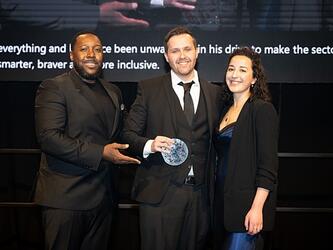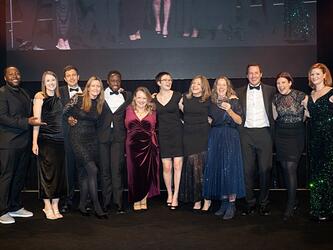Seeing things clearly: radical transparency and research
Organisations are under increasing pressure to be more open about their business activities and supply-chain partners. However, the majority still fall short of the ideal.
Highlighting this point, the Alliance for Corporate Transparency recently published its 2018 Research Report, which examines the state of corporate sustainability disclosure under the EU Non-Financial Reporting Directive. The research found that only 50% of companies are publishing information on environmental matters that is clear on concrete issues, targets and principal risks. The picture on social and anti-corruption matters is even worse, with more than 60% not up to scratch.
Although most companies still have far to go, several organisations have led the way in making their business practices more visible – for example, by demonstrating the credibility of their supply chain to help consumers and clients make more informed decisions. This approach is often labelled ‘radical transparency’.
Outdoor clothing brand Patagonia is an oft-cited example of transparency; it’s very honest and open about how its products are made and where materials are sourced, to the point of publishing comprehensive ‘Footprint Chronicles’ information about its supply chain. US charity GiveWell, meanwhile, goes so far as to put up a list of its shortcomings on its website.
This raises the question of what role insight can play in helping organisations become more transparent. Plenty of companies run community panels, but how might they go beyond simply listening to consumers? Can they use mechanisms of this kind to be more transparent about their own processes and allow consumers to ask the company questions? In other words, almost conducting research in reverse.
Coventry Building Society has adopted such an approach, running a pilot ‘reverse-focus groups’ initiative, that allowed selected panel members to ask questions of the executive team. Members led the discussion and the session took place in real time, with two executive directors answering the questions.
For Coventry, this was about true engagement, giving customers the opportunity to talk about the things that matter to them. It also helped the building society to remain true to its mission of putting members first.
“We decided quite early on not to make any topics out of bounds,” says head of market research Emma Baxter. “It was completely up to the members to decide what they wanted to talk about on the day. But we had to put a bit of structure into it because, otherwise, we’d have ended up with 100 different topics. So we got them to say in advance, ‘this is what I want to talk about’ and to vote on each of those ideas. All of this was done quite transparently – on the member panel, so they could see what other people had said. We then picked the top four most popular topics.”
The directors asked not to be briefed on the questions in advance because they preferred not to come across as scripted. Spontaneous answers added to the air of openness, says Baxter, by sounding “more human and less corporate”.
Chris Martin, chief marketing officer at FlexMR, which runs Coventry’s 4,000-strong panel, says: “This direct interaction, to some degree, starts to replace reports – which are inherently more detached and less memorable, and which can be damaging to culture.”
Baxter was very conscious of Coventry having a mature research programme that followed the organisation’s agenda. “Traditional research tends to be skewed towards asking rather than listening,” she says. “You can put open questions into surveys and do focus groups, but it’s still us wanting to talk to people on topics of our choosing.
“We wanted to understand what’s important to members if they lead the agenda with the topics they want to talk about. It gives you a different lens in terms of your insight.” Coventry intends to run reverse-focus groups along these lines around twice a year.
Building society Nationwide allows members to take part in online ‘live chat’ conversations with senior leadership – and, in the first of these, the group chief executive took unfiltered questions.
“Our research has shown that members appreciate the less formal nature of these chats where they’re not receiving ‘the party line’ answer to their questions,” says Drew Drewery, research manager. “There are no limits to the numbers who can view and participate, enabling us to engage with as many members as possible.”
In addition to the online chats and regular in-person ‘talkbacks’, members can use Nationwide’s ‘connect’ online panel to discuss topics with each other and the society.
There are certainly different ways of approaching this. Several years ago, Suzanne Rubin, then president of American Airlines’ AAdvantage frequent-flier programme, took to the skies with passengers, with the express purpose of answering their questions and taking their suggestions on board (in every sense!).
Of course, there’s more to transparency than answering questions. Some organisations are breaking new ground by sharing their data and metrics with the public, often for the dual purpose of building trust and highlighting a point of difference for competitive advantage.
US online financial services start-up Aspiration, a ‘socially conscious’ business, has used its metrics to compile a list for shoppers highlighting companies at the forefront of sustainability and respect for employees.
Fashion retailer Reformation, meanwhile, calculates the environmental impact of each garment it makes, adding together carbon dioxide (CO2 ) emissions, water use and waste generated. Then it works out a ‘Refscale’ score, showing how much its garments reduce these environmental impacts compared to typical, less sustainably produced clothes. Finally, this information appears on every product page of its website, to quantify the impact each Reformation garment has on the environment.
In an era of low consumer trust in business, radical transparency – research-led or otherwise – is one way in which brands can stand out from the crowd.
This article was first published in Issue 25 of Impact.

We hope you enjoyed this article.
Research Live is published by MRS.
The Market Research Society (MRS) exists to promote and protect the research sector, showcasing how research delivers impact for businesses and government.
Members of MRS enjoy many benefits including tailoured policy guidance, discounts on training and conferences, and access to member-only content.
For example, there's an archive of winning case studies from over a decade of MRS Awards.
Find out more about the benefits of joining MRS here.













0 Comments